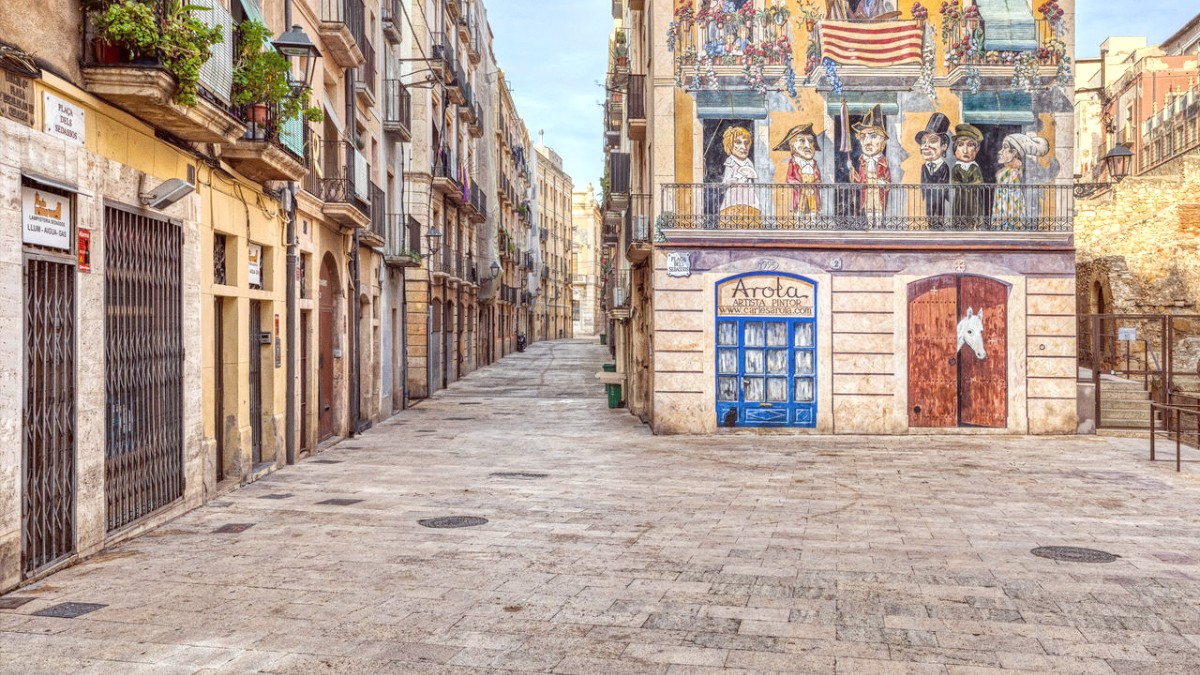
Catalonia, Spain
Tarragona's cuisine roots deep in Mediterranean traditions. Its coastal location and agricultural surroundings shape the food. While direct Roman influence on modern dishes is minimal, the enduring use of local produce stems from this past.
Catalan cuisine forms the backbone of the region's culinary identity, with fresh seafood, olive oil, and fresh vegetables.
El Serrallo emphasizes "cuina marinera" (seafaring cuisine). Priorat wine region proximity means excellent local wines. Calçots are a seasonal winter/spring specialty.
Lunch typically 2:00 PM - 4:00 PM. Dinner from 9:00 PM. Many restaurants open no earlier than 8:00 PM or 8:30 PM. Adjust to this later schedule.
Tapas: Small plates, often eaten standing, or as appetizers. Menu del Día: Fixed-price lunch menu on weekdays, great value. Tipping: Not mandatory but appreciated (5-10%). Bread: Often served, sometimes for a small charge. House wine: Usually good and affordable.
A flavorful rice dish. The rice is fried before adding broth, giving it a toasted flavor. It often includes seafood. Find this in traditional seafood restaurants, especially in El Serrallo.
A must-try seafood rice.
Similar to paella, but made with short, thin noodles (fideos) instead of rice. Typically with seafood.
Noodle paella, a local favorite.
Rich sauce from roasted tomatoes, garlic, almonds, hazelnuts, and ñora peppers. Pair with fish, seafood, or vegetables, especially calçots. Try at local "braseries."
The region's signature sauce.
Vermut de Reus, Cava (Catalan sparkling wine), wines from Priorat/Montsant/Tarragona DO regions. Sangria is touristy; locals often opt for wine or beer. Clara (beer with lemon soda) refreshes.
Crema Catalana (Catalan crème brûlée). Panellets (sweet almond pastries, All Saints' Day). Coca (flatbread, sweet or savory). Torró (nougat, Christmas sweet).
El Posit and Restaurant Sol Ric. Refined Catalan cuisine, focus on fresh seafood, quality ingredients, charming settings.
AQ Restaurant for modern Catalan with creative twists. Lola Bistro for contemporary tapas. Restaurant Palau del Baró for traditional Catalan in Old Town.
Mercat Central (Central Market) for fresh produce, cheeses, cured meats. Stalls also sell prepared foods. Local bars for "bocadillos," "raciones," "platos combinados." Pizzerias and kebab shops are widespread.
This beautiful modernist building is a must-visit for food enthusiasts. Explore local produce, seafood, meats, and cheeses.
Small bars for quick bites and drinks. Closed Sundays.
A very large weekly outdoor market held on Tuesdays on the outskirts of the city. It sells everything from clothes to household goods.
Accessible by bus from the city center.
Pasta, pizza, and classic Italian dishes.
Chinese and Japanese restaurants.
Variety of European dining experiences.
These are especially present in the newer parts of the city.
Local culinary schools or tour operators offer Catalan cooking classes, perhaps focusing on paella or tapas. Inquire at the tourist office.
Food tours explore Tarragona's tapas or El Serrallo's fishing quarter.
Day trips to Priorat wine region for vineyard tours. Olive oil mills (almàsseres) in surrounding areas for production insights.
A market visit before a cooking class connects you with ingredients.
Dine in a traditional "masia" (Catalan farmhouse) for an authentic rural meal.
Engage with the local food scene beyond just eating.
A Roman gastronomy festival in May, recreating ancient dishes for an unique historical culinary journey.
Explore vineyards and taste wines in the renowned Priorat region, a short trip from Tarragona.
Visit local "almàsseres" (olive oil mills) to learn about the production of Spain's liquid gold.
Fried dough pastries served with thick hot chocolate. A popular breakfast or snack choice.
Widely available for a sweet treat.
Small, sweet almond pastries, especially popular around All Saints' Day (November 1st).
A seasonal treat with cultural significance.
Tarragona's dining landscape suits various tastes and budgets. From street food to fine dining, a dish awaits every palate.
Many establishments preserve traditional Catalan recipes. Seek out family-run places for truly authentic flavors.
Given the coastal and agricultural setting, expect fresh ingredients. Markets are a testament to local produce.
To fully experience Tarragona's food scene, adapt to local meal times. Many kitchens close between lunch and dinner. Consider a "Menu del Día" for weekday lunch value.